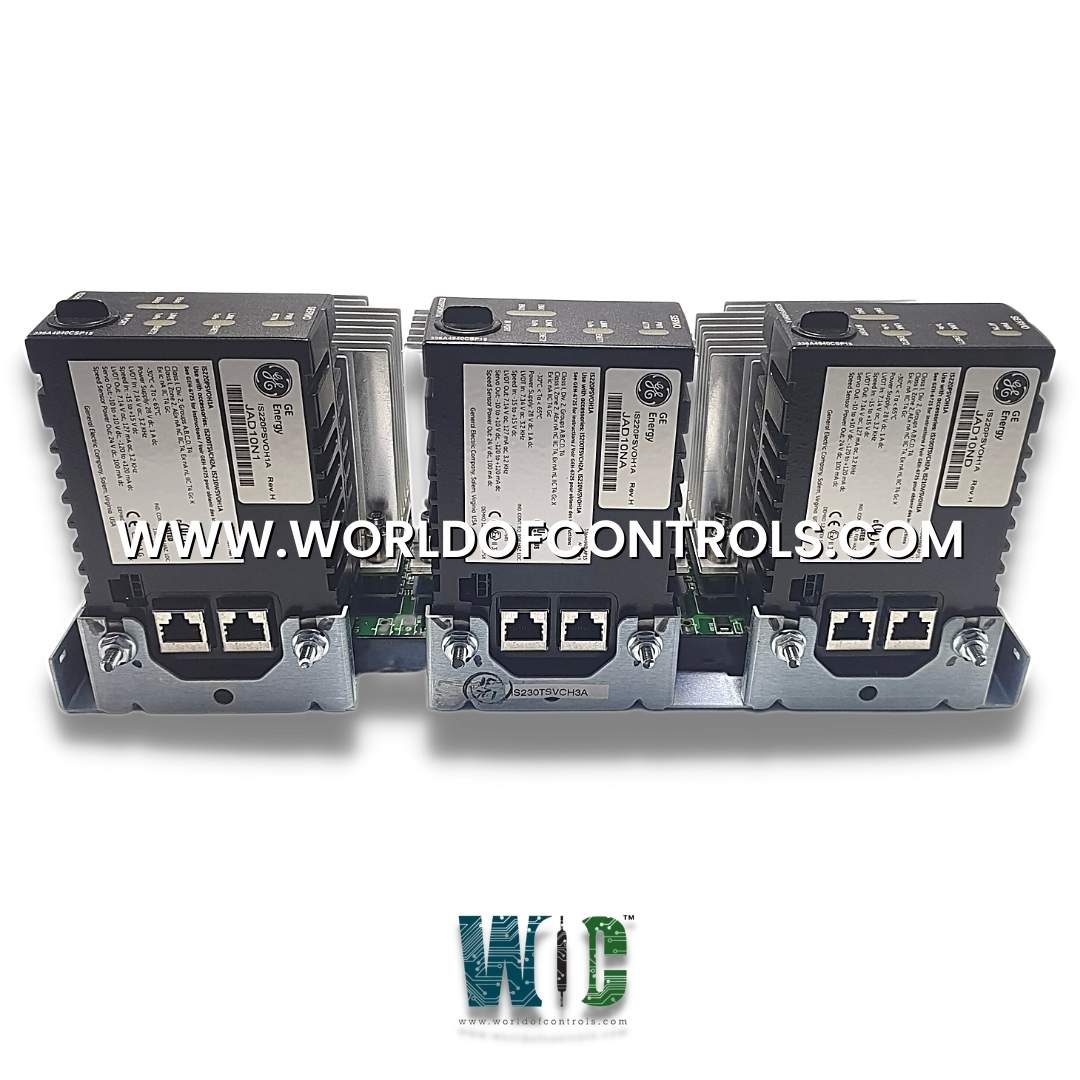SPECIFICATIONS
Part No.: IS230TSVCH3A
Manufacturer: General Electric
Country of Manufacture: United States of America (USA)
Size: 33.0 cm high x 17.8 cm, wide (13 in. x 7 in.)
Technology: Surface mount
Temperature: -30 to 65oC
Product Type: Servo Terminal Board
Availability: In Stock
Series: Mark VIe
Functional Description
IS230TSVCH3A is a servo terminal board developed by GE. It is a part of the Mark VIe control system. It serves as a critical interface component within the control system, specifically designed to facilitate the operation of electro-hydraulic servo valves responsible for actuating steam/fuel valves.
Features
- Bi-directional Servo Current Outputs: Provides two channels of bi-directional servo current outputs, enabling precise control of servo valve movements in both directions.
- LVDT Position Feedback: LVDTs are utilized to measure the position of valves accurately. The terminal board integrates LVDT position feedback functionality, ensuring real-time monitoring and control of valve positions.
- LVDT Excitation: Excitation signals required for LVDT operation are generated by the board, ensuring consistent and reliable performance of LVDTs.
- Pulse Rate Flows Inputs: The board also features inputs for pulse rate flows, facilitating the measurement and monitoring of flow rates within the system. These inputs play a crucial role in fuel flow measurement in gas turbine applications.
- Scalability and Flexibility: The servo terminal board offers scalability and flexibility to accommodate varying system requirements and configurations. It supports up to eight LVDT valve position inputs, allowing users to choose between one, two, three, or four LVDTs for each servo control loop. This flexibility enables customization and optimization of control strategies based on specific application needs.
Configuration
- Configuration in Simplex System: In a simplex system setup, servo 1 and servo 2 are configured individually for optimal performance. Servo 1's coil current is set using jumper JP1, ensuring precise control of its operation. Similarly, servo 2's coil current configuration is managed with jumper JP4. This tailored configuration ensures that each servo operates efficiently within the system's specifications.
- Configuration in TMR System: In a Triple Modular Redundant (TMR) system, each servo output expands to accommodate three coils, enhancing redundancy and fault tolerance. For servo 1, jumper selections using JP 1-3 dictate the coil currents, while JP 4-6 control the coil currents for servo 2. This meticulous setup optimizes system reliability by providing redundant pathways for critical operations.
- Power Supply Management: Proper power supply management is paramount to the functionality of the servo terminal board. To ensure consistent and reliable power delivery, it is imperative to verify the status of power switches SW1, SW2, and SW3. All three switches must be in the ON position, and the corresponding power indicators for channels P28R, S, and T should be illuminated. This step confirms that power is adequately supplied to the servo terminal board, enabling seamless operation of the servos in the control system.
The WOC team is always available to help you with your Mark VIe requirements. For more information, please contact WOC.
Frequently Asked Questions
What is IS230TSVCH3A?
It is a servo terminal board developed by GE under the Mark VIe series.
How are servos configured in a Simplex system?
In a simplex system, servo 1 is configured for the correct coil current using jumper JP1, while servo 2 is configured with jumper JP4.
What is the configuration for servos in a TMR system?
In a Triple Modular Redundant (TMR) system, each servo output can have three coils. For servo 1, coil currents are selected using jumpers JP 1-3, and for servo 2, they are selected using jumpers JP 4-6.
